© ROOT-NATION.com - Use of content is permitted with a backlink.
Those reading this review in the coming months from its publication – congratulations! Like me, you are living in the heyday of Mid-Tower cases. When support for 420mm cooling is no longer a novelty, side airflow is not unique, and four included fans don’t seem like an aggressive advantage. Nevertheless, there’s always room for unique features in the Mid-Tower segment. This has been proven by the APNX C1 case.
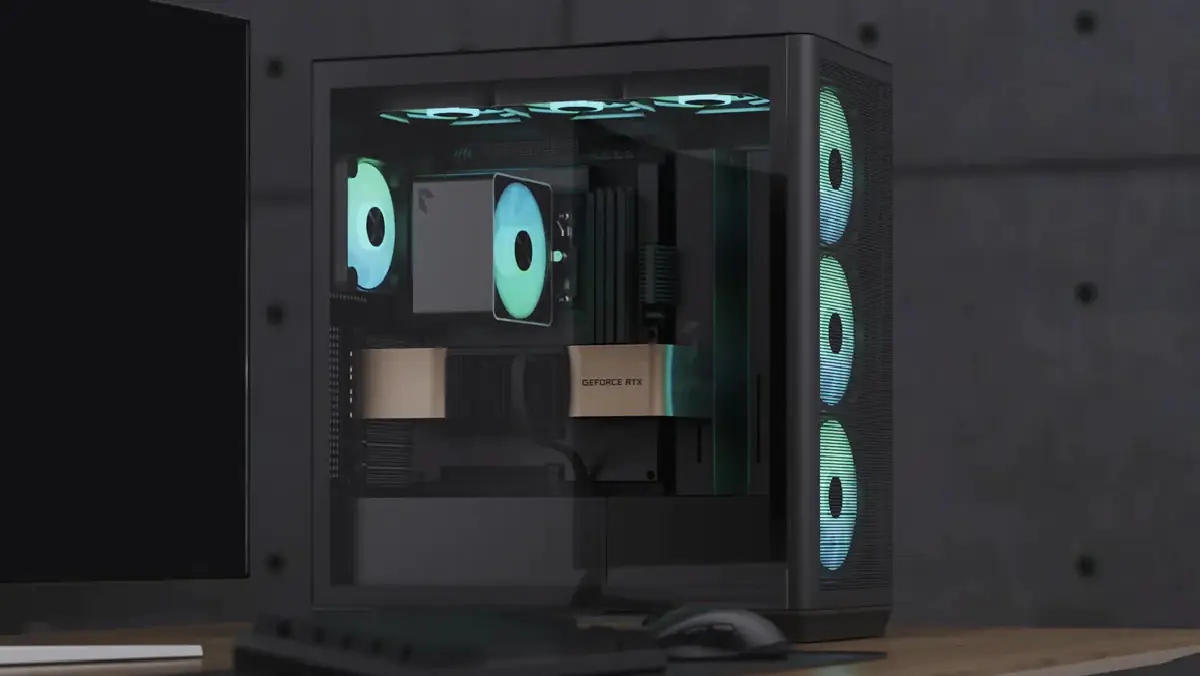
Market positioning
However, it has its justification. Because $125 for a Mid-Tower is already pushing the limits of perception, considering that for such an amount, I could easily find a Full Tower. Not that you necessarily need to go for a Full Tower if you have over a hundred bucks to spare, but it’s still not cheap.
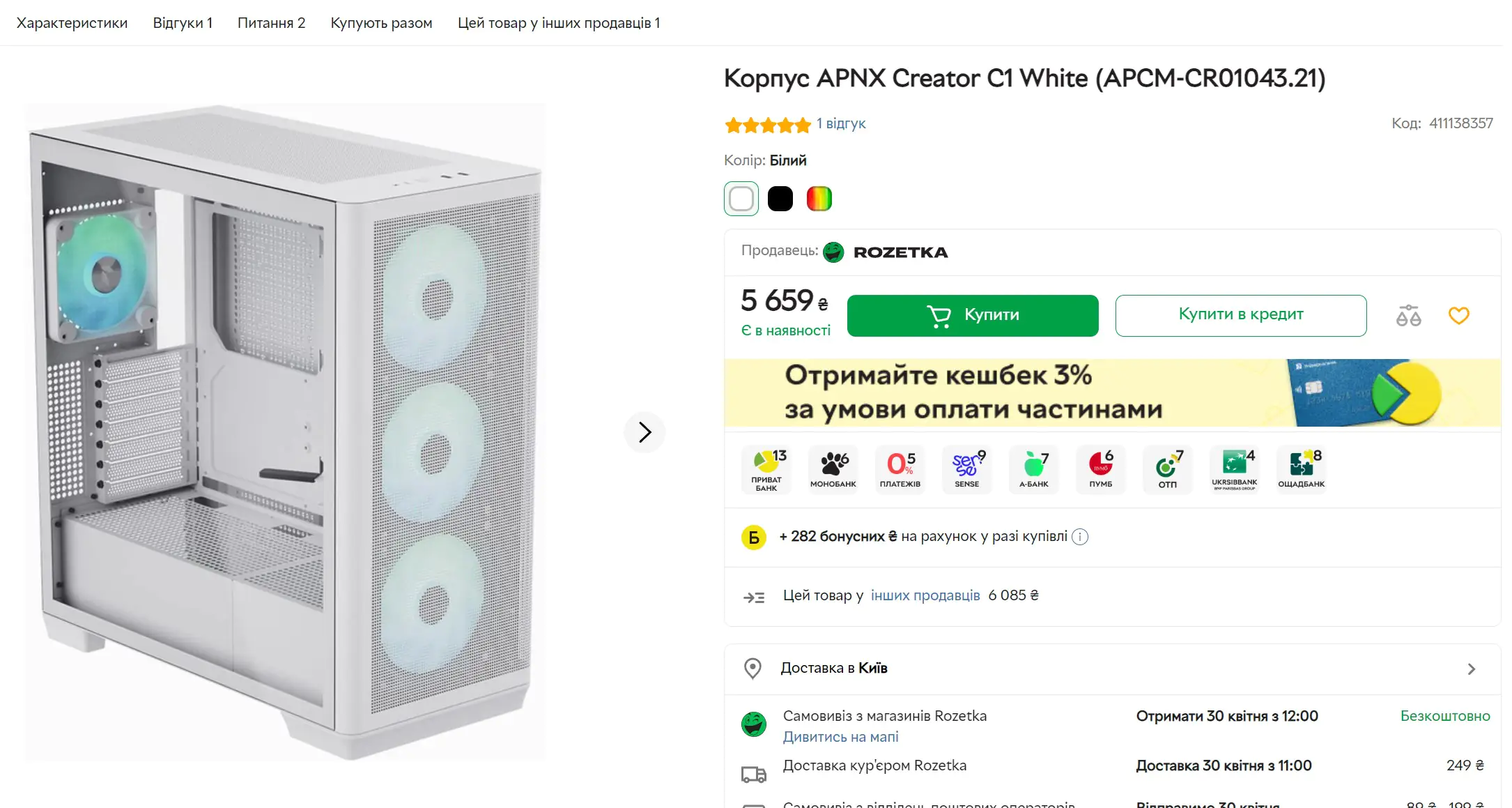
What can justify such a price, speaking generally? The IF Design Award 2024 and flagship status – in my opinion, those are compelling arguments. But you’ll see for yourself soon enough.
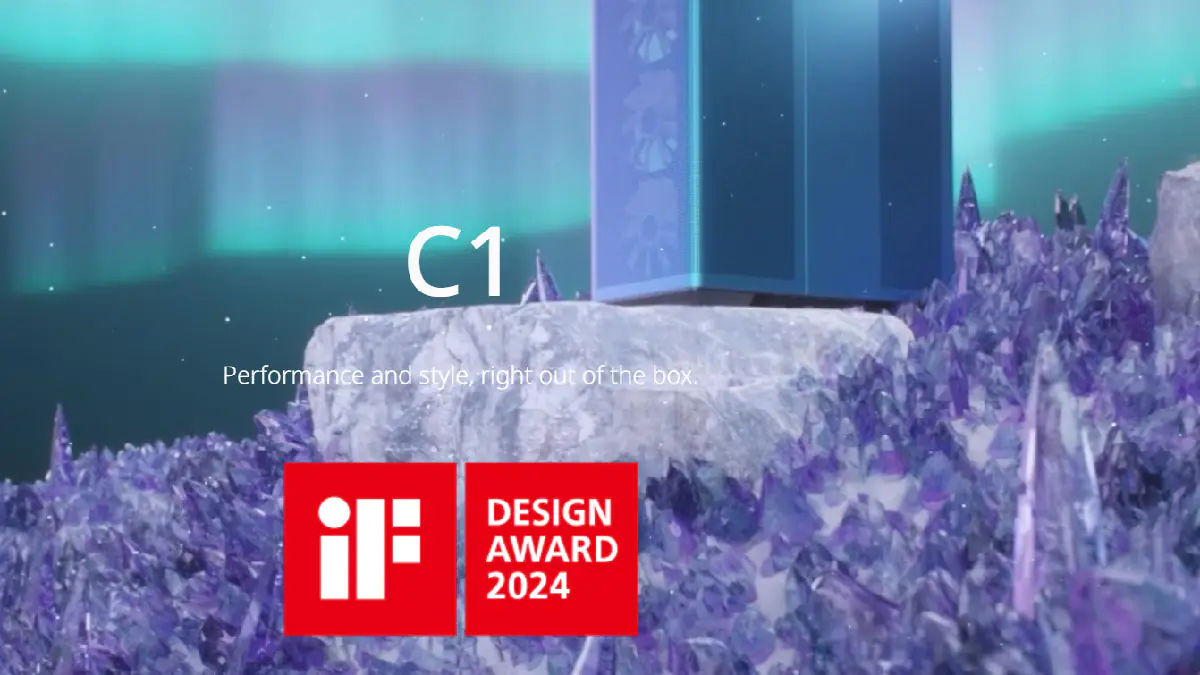
Package contents
The case is delivered in sturdy expanded polypropylene and immediately greets us with high-quality square perforations. Included with the case is an instruction manual, as well as a set of screws, ties, and adhesive cable management channels.

Design
The first photos in full view immediately show why the case earned a design award. The APNX C1 comes in three variants: white, black, and the gradient ChromaFlair, which is a blend of purple and turquoise. The one I have for review is the latter.
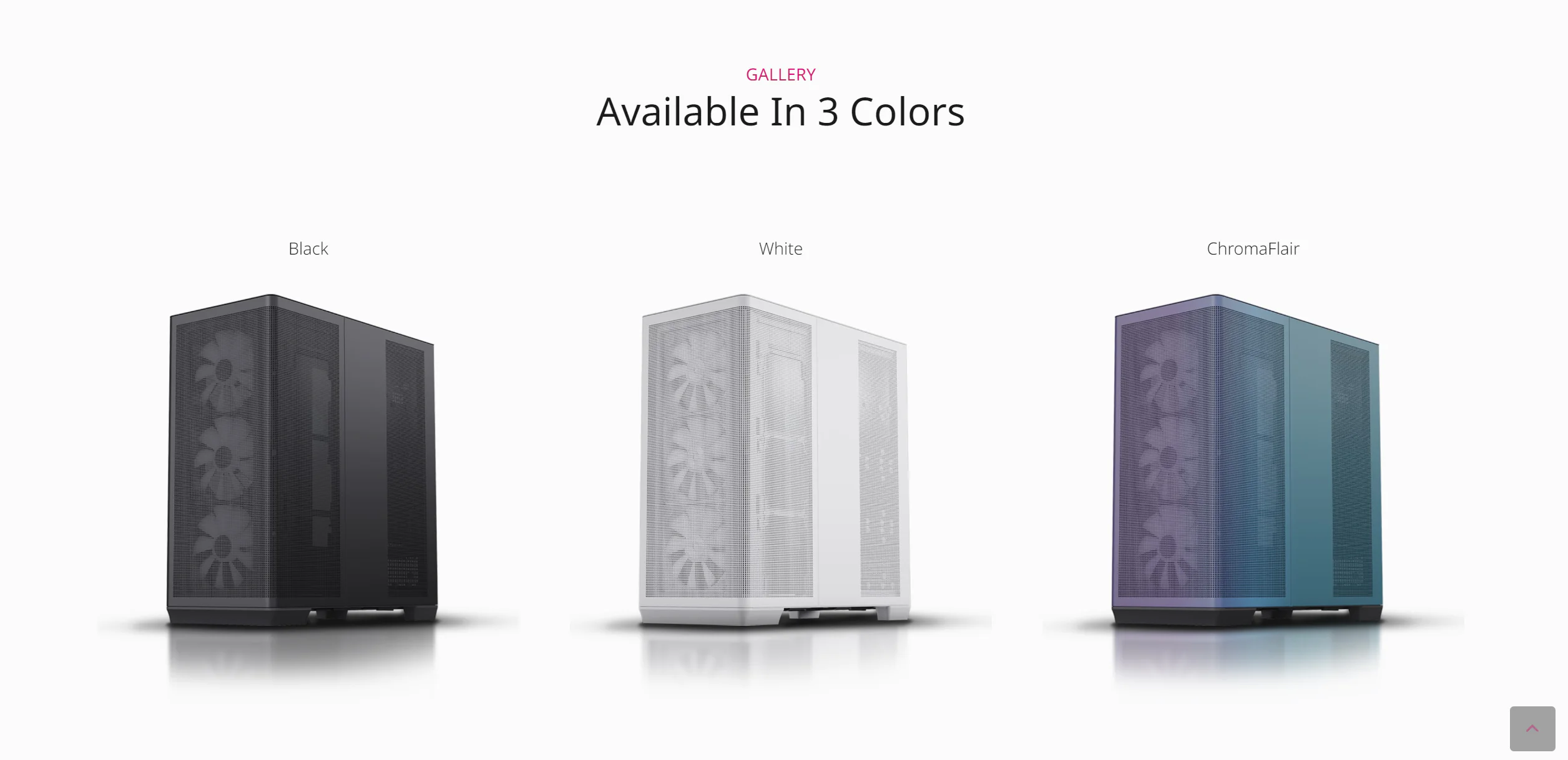
It looks absolutely magical, and if you don’t know about the gradient – it will feel like the color is changing at an angle.
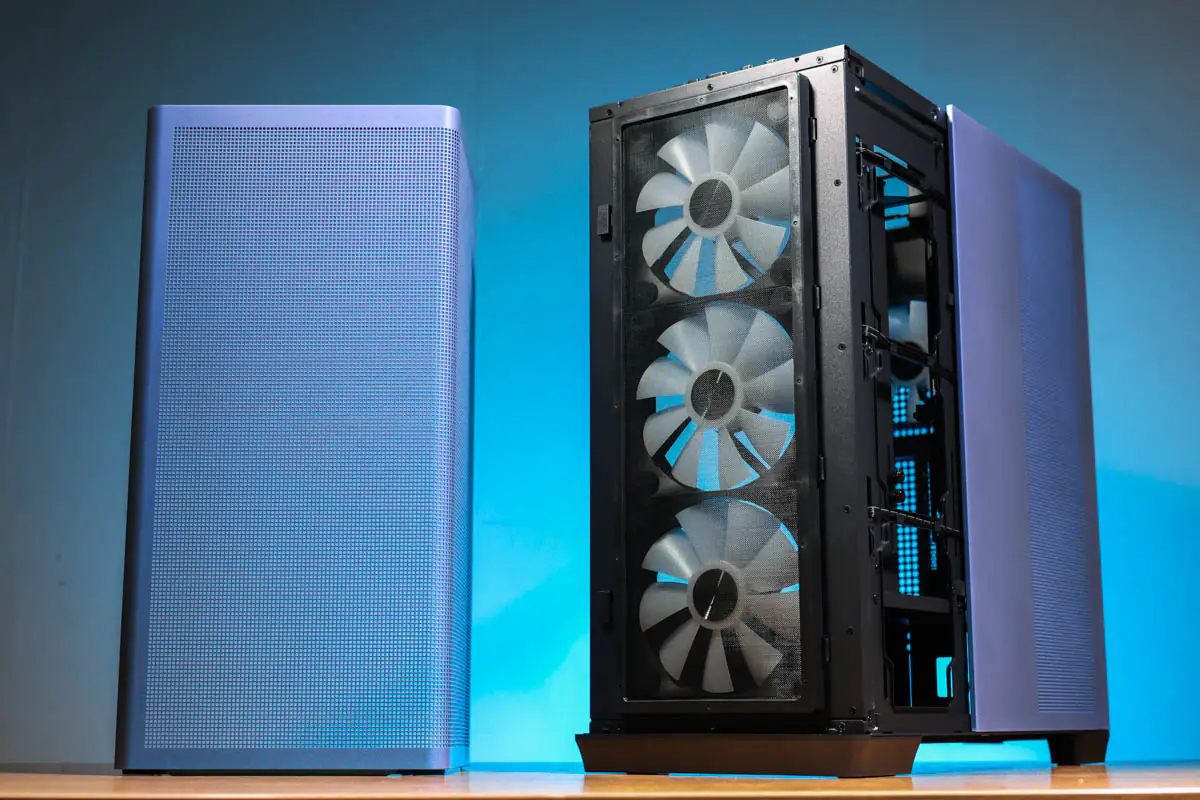
Also immediately noticeable is the solid angular panel opposite the glass one. Technically, the case still has three removable panels, two of which are perforated, but the front one significantly curves around the right side, and when removed, it provides access to three mounting locations for fans—and the trio of pre-installed fans behind the mesh.
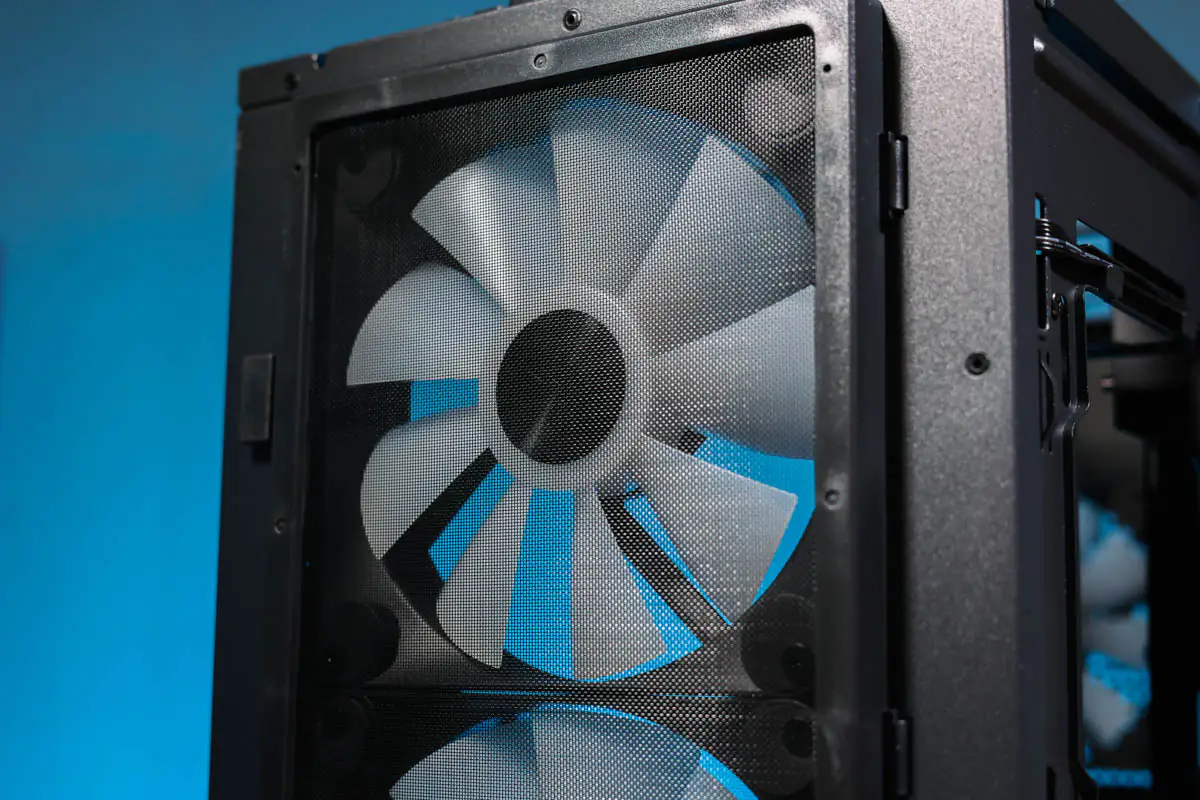
APNX FP1 fan
A few words about the fans while we’re on the topic. The case comes with four proprietary APNX FP1 fans. Unlike many other manufacturers, these models are not a lower-grade version of retail fans because they are retail fans. To demonstrate this, the manufacturer also sent me four additional ones separately.
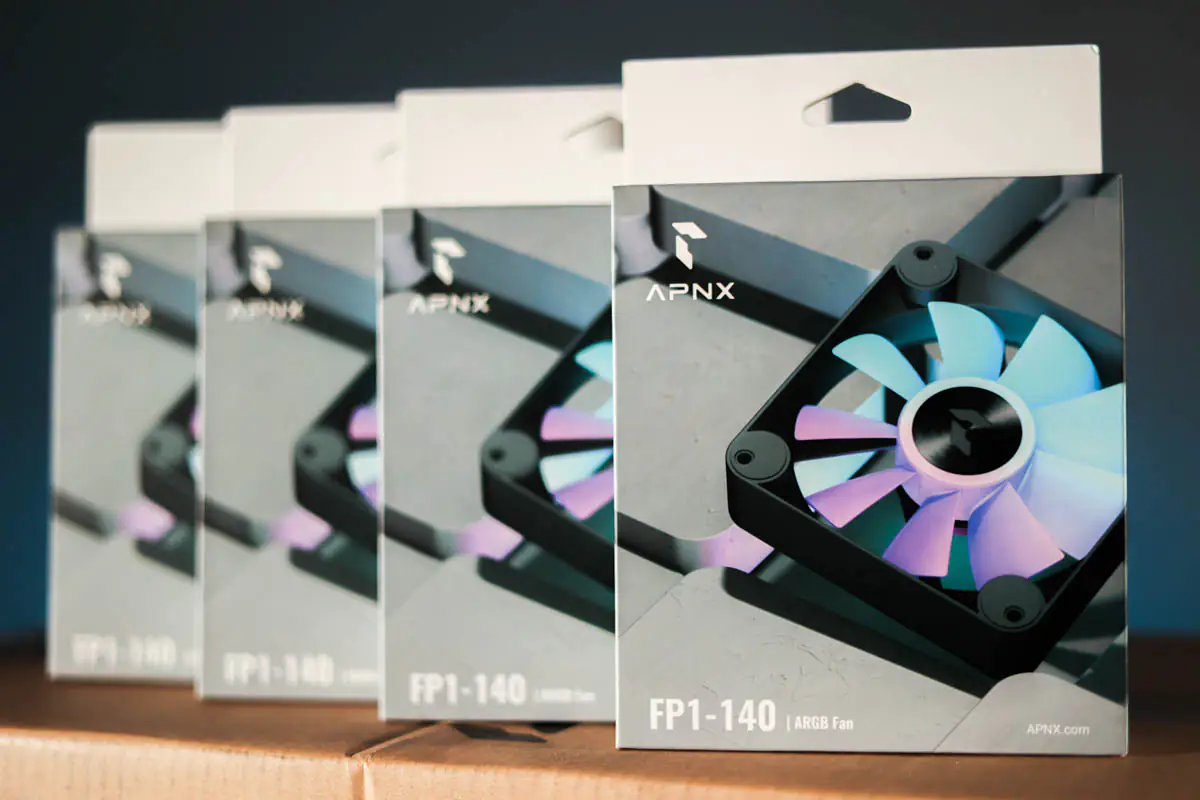
Not to say that the FP1 fans are unique, but they are overall excellent, well-made, and have some features. Specifically, their polishing type and 30mm thickness. The latter is important because 99% of fans, even 140mm ones, have a thickness of 25mm, which is not always supported by the case. This is obviously not an issue for the APNX C1 models.
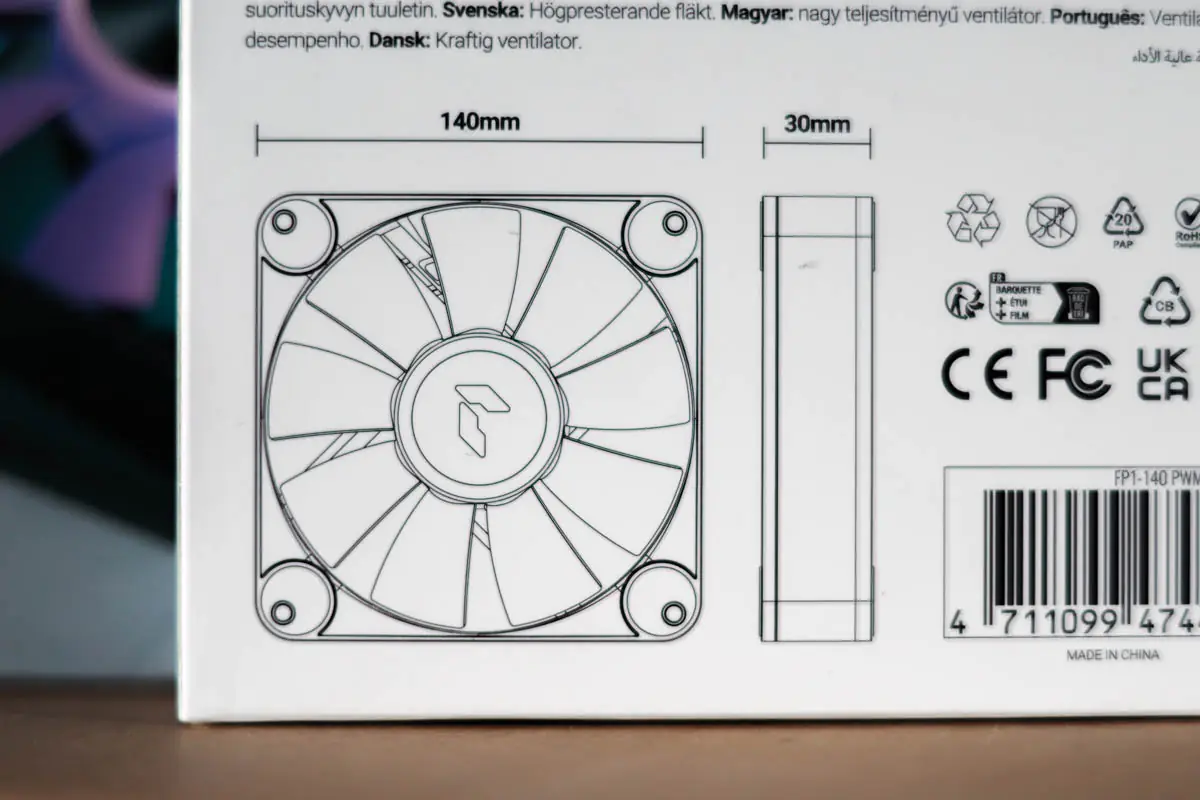
The thickness also provides additional airflow, which, combined with the 140mm diameter, makes the FP1 fans almost silent when necessary. They feature a hydrodynamic bearing, with a rotation speed ranging from 500 to 1600 RPM, and an airflow of almost 87 CFM.
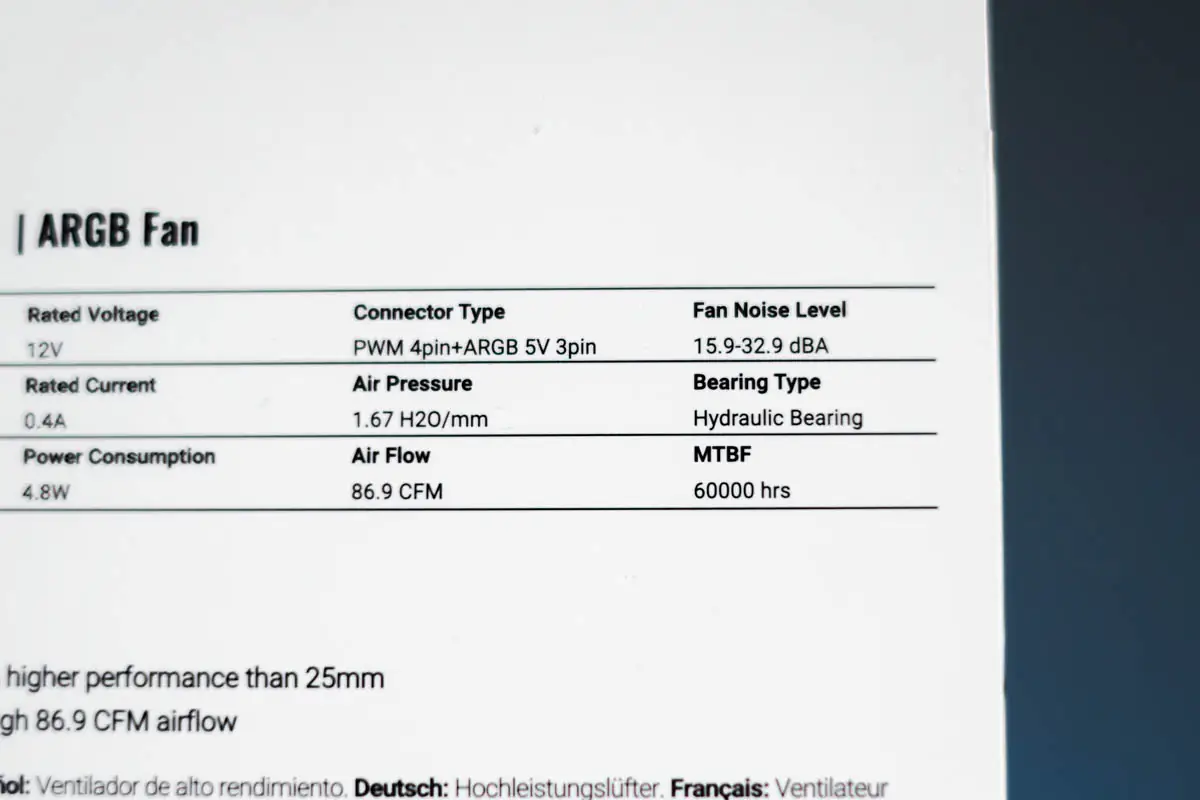
There’s a damping pad, PWM support, and a 3-pin RGB cable with the option for daisy-chaining. The included screw sets are suitable for installation both in liquid cooling radiators and in the case itself. Plus, the RGB lighting looks magical.
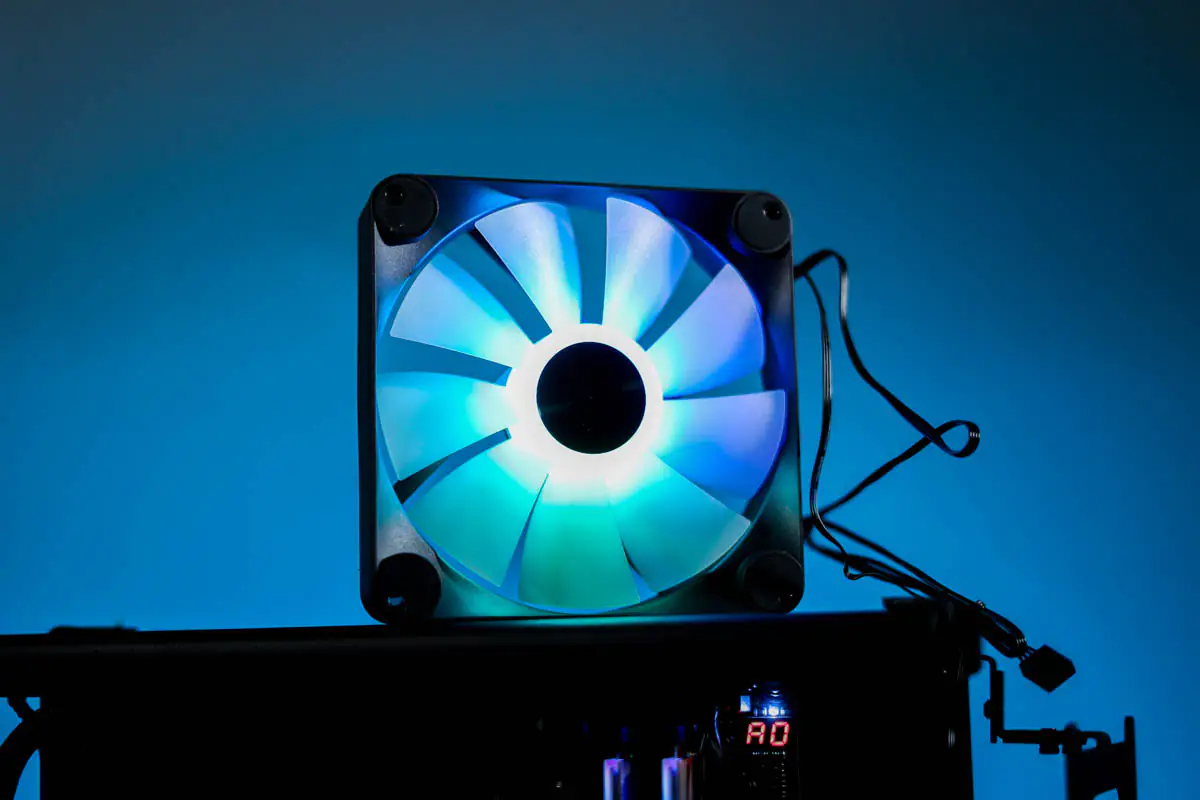
Cooling
The APNX C1 comes with three of these fans in the package, plus a 120mm variant at the back. In total, you can install up to 11 fans. This is a record in my memory, but it may not be necessary for you. As we mentioned earlier, a large amount of airflow isn’t always beneficial, especially if there’s a risk of turbulence under a hot graphics card.
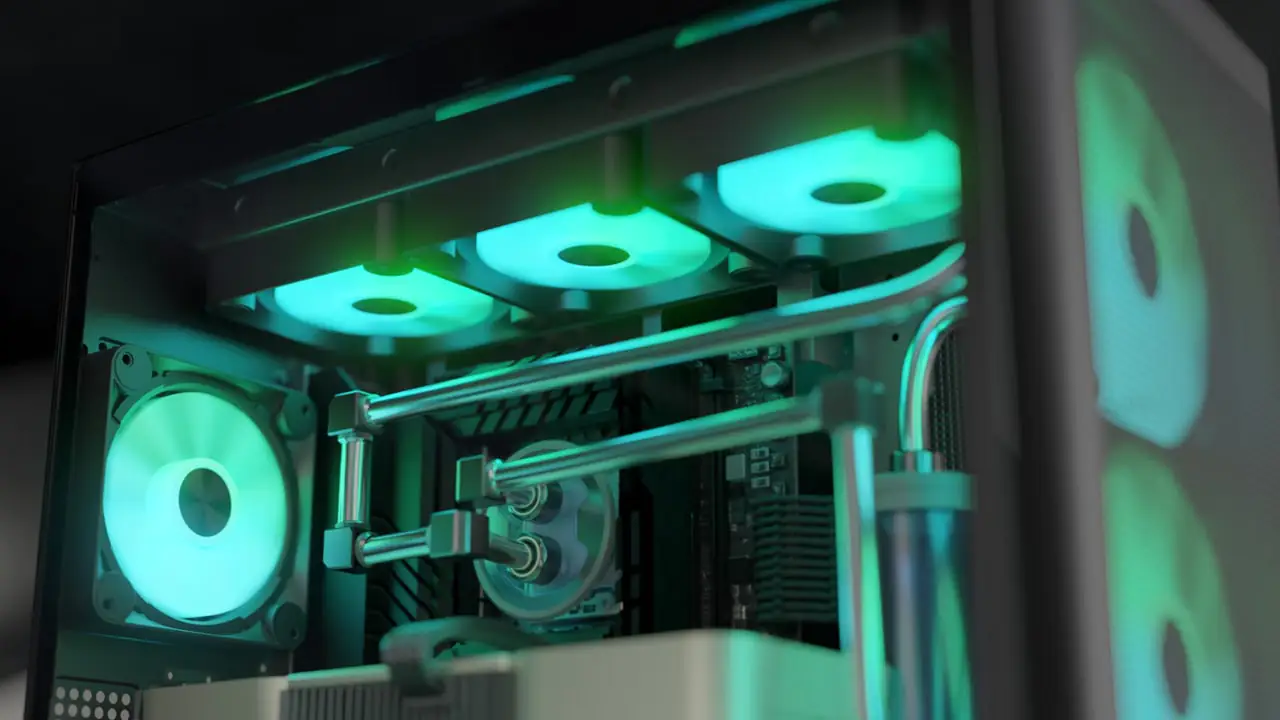
In theory, the remaining part of the right side panel could help with this. It’s both perforated and has THREE sets of screw mounts – for securing hard drives, SSDs, or fans.
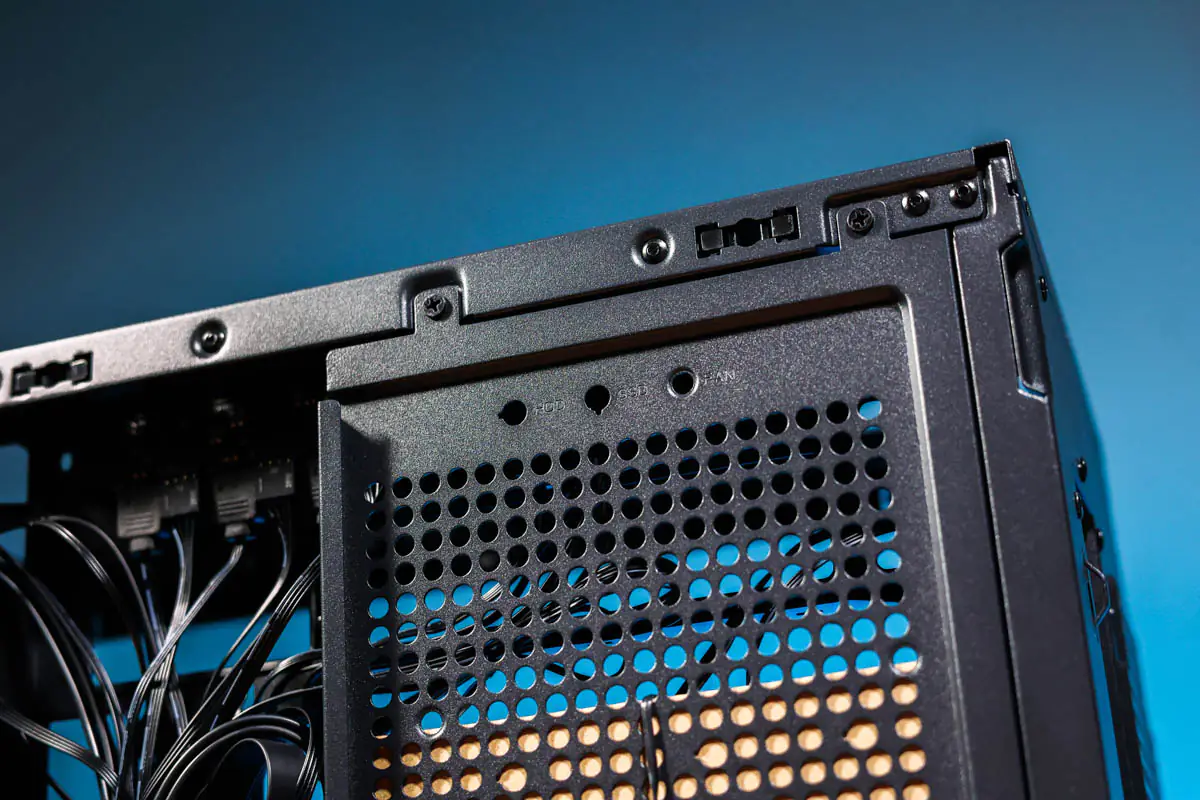
I note that this guarantees at least a 30mm gap for cable management – but in reality, the manufacturer promises a full 40mm.
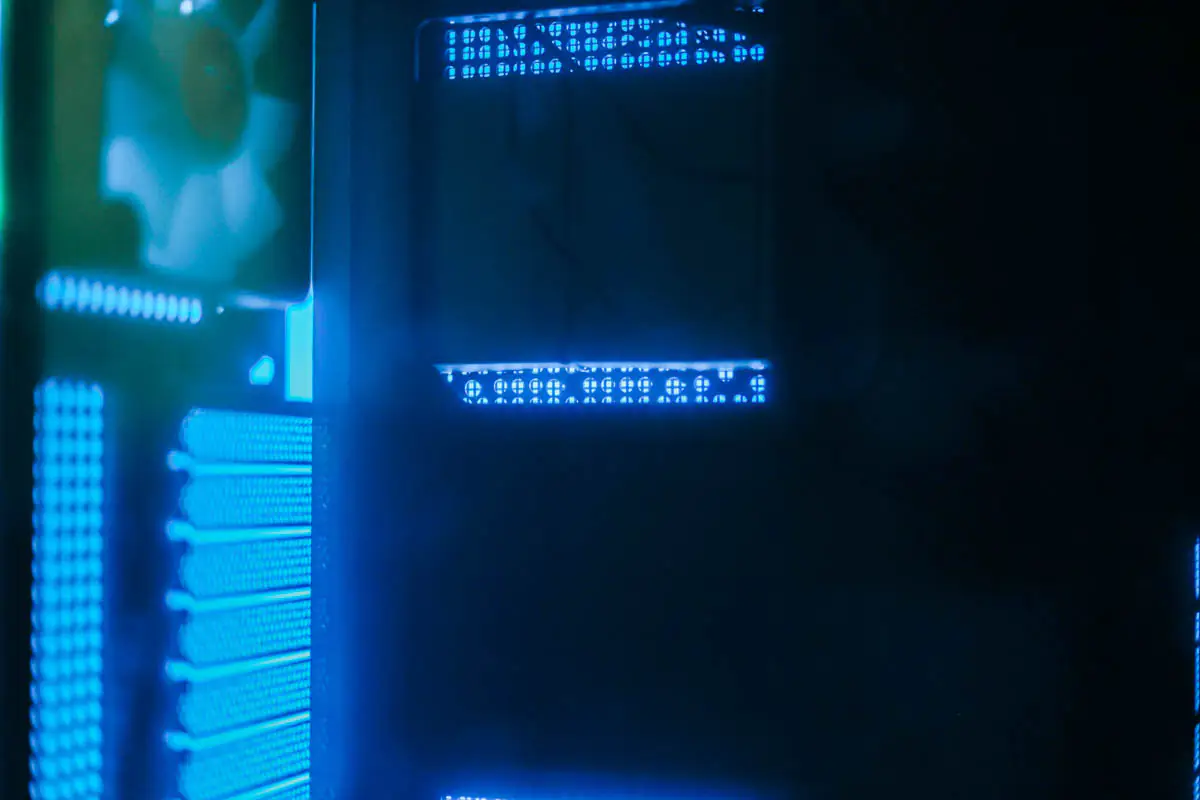
Liquid cooling compatibility, however, extends only up to 360mm – either at the top or at the rear. It’s theoretically possible to install it at the front, but it may be obstructed by the dust filter.
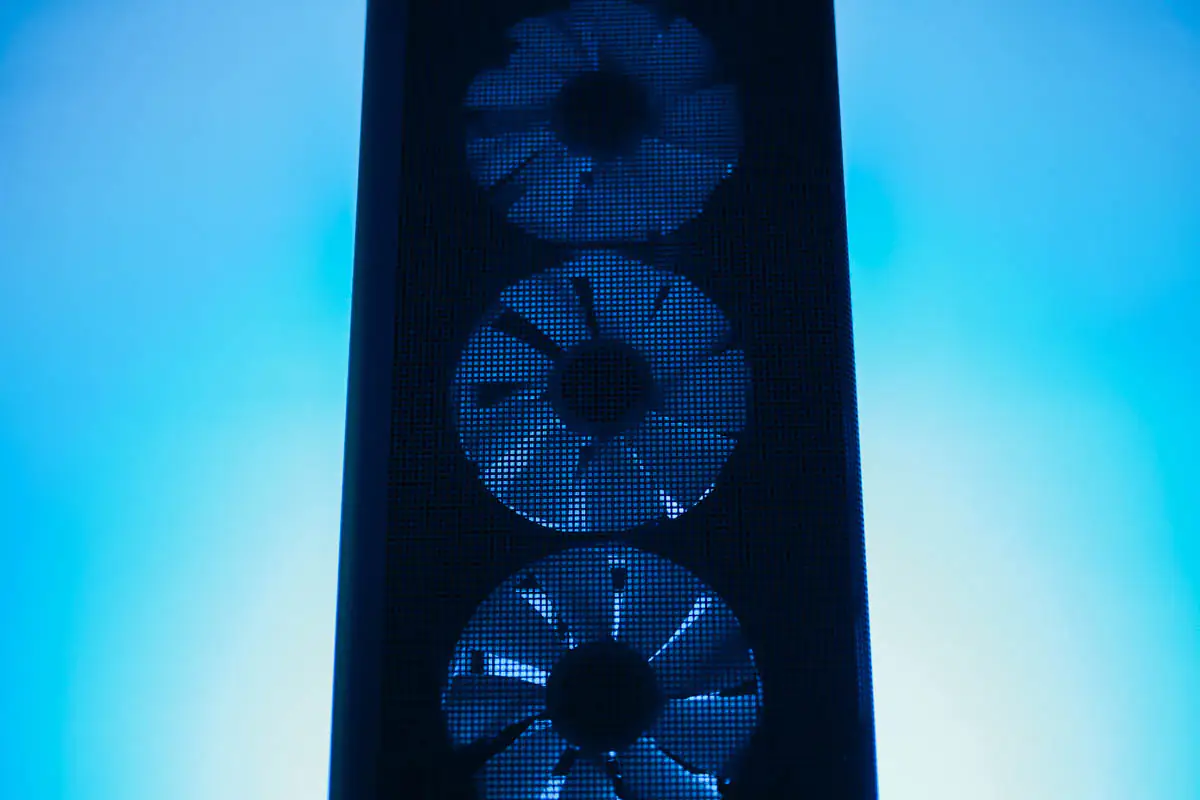
Peripherals and compatibility
The front panel of the case features two USB 3.0 ports, one Type-C 10 Gbit port, one each of mini-jacks for microphone and headphones, along with power buttons and RGB controls.
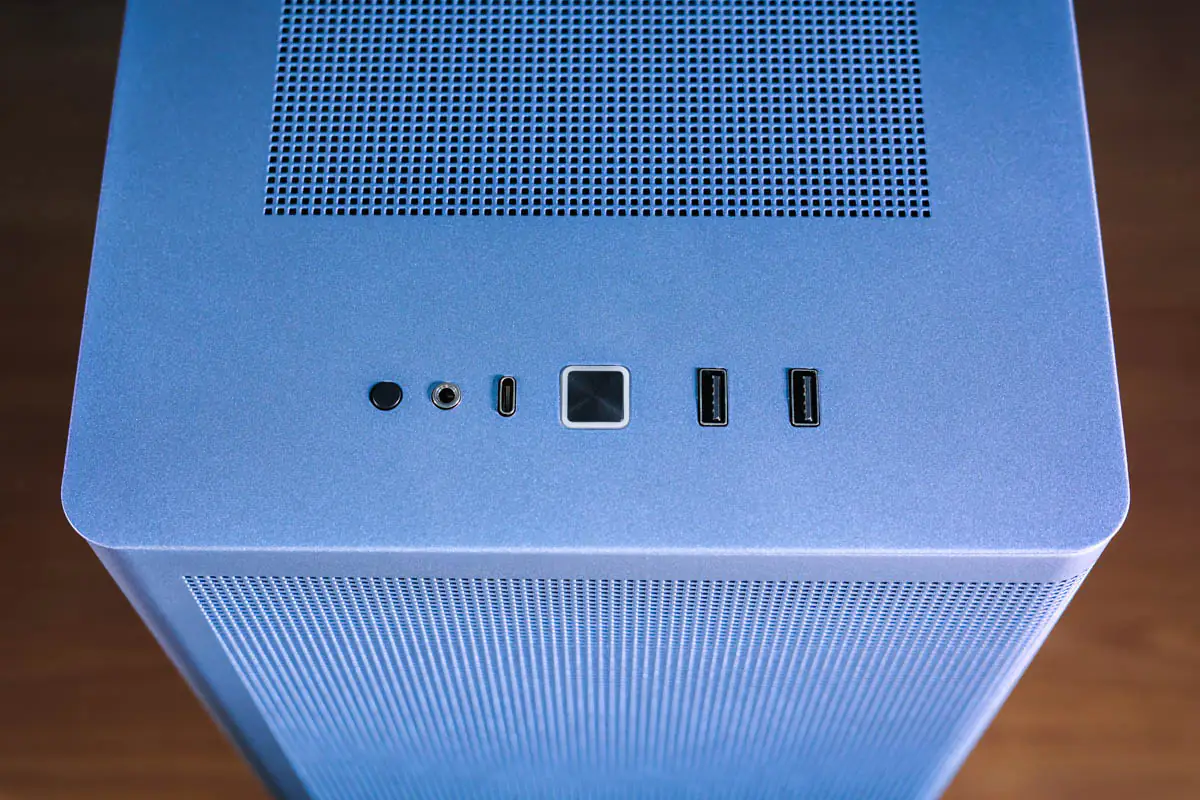
The graphics cards are supported with a length of nearly 400 mm, and there’s a separate rubberized bracket with adjustable height on the side. Processor coolers are supported up to 166 mm, power supplies up to 270 mm. You can install up to 3 units of hard drives and SSDs in place of fans on the side.
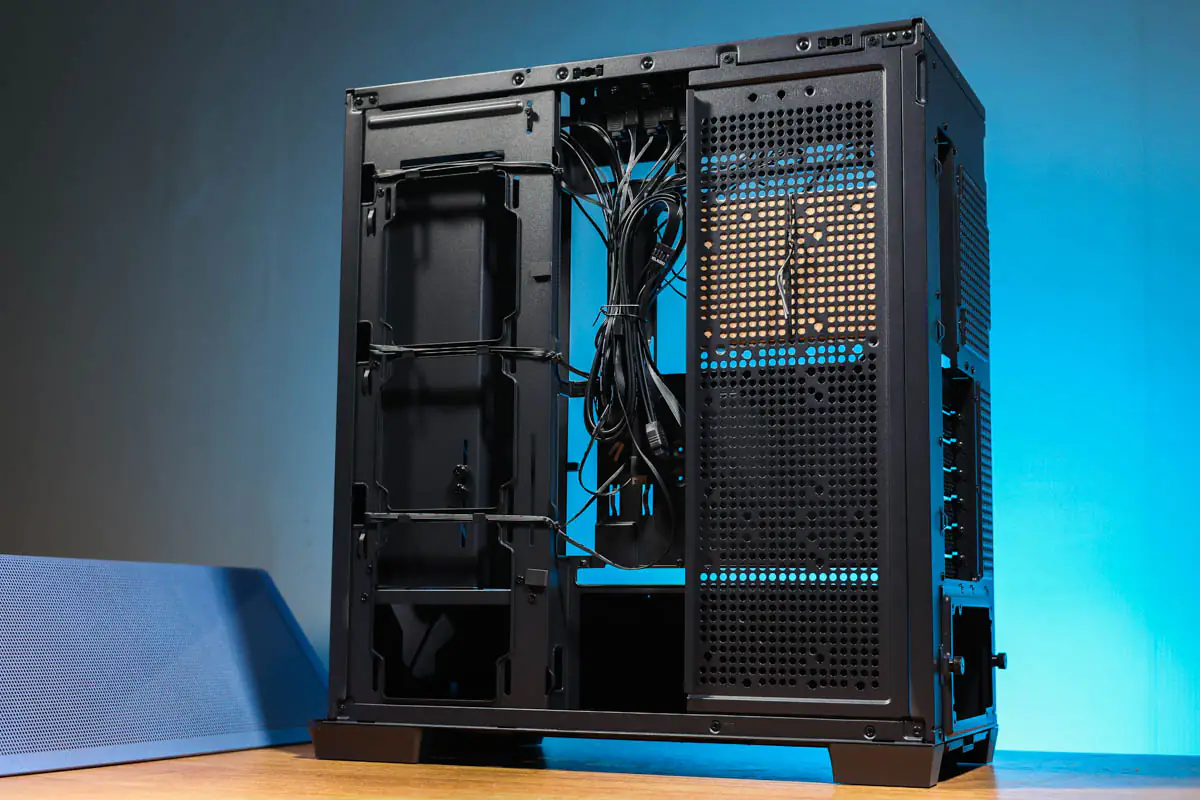
The steel thickness is 0.8 mm, and the body material is galvanized steel, while the front panel is stamped galvanized. The dimensions of the case are 230×502×464 mm. There are 7 PCIe expansion slots.
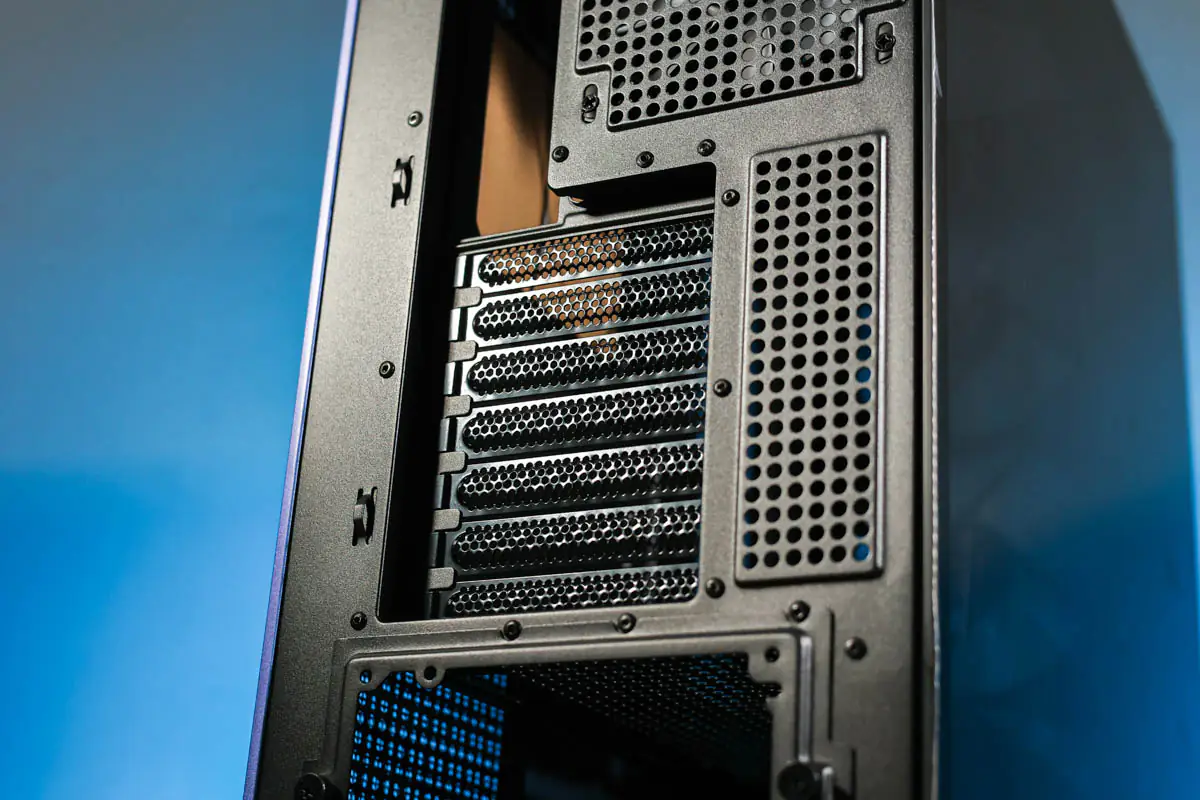
There is also the option to install the graphics cards vertically, although a riser is not included in the kit.
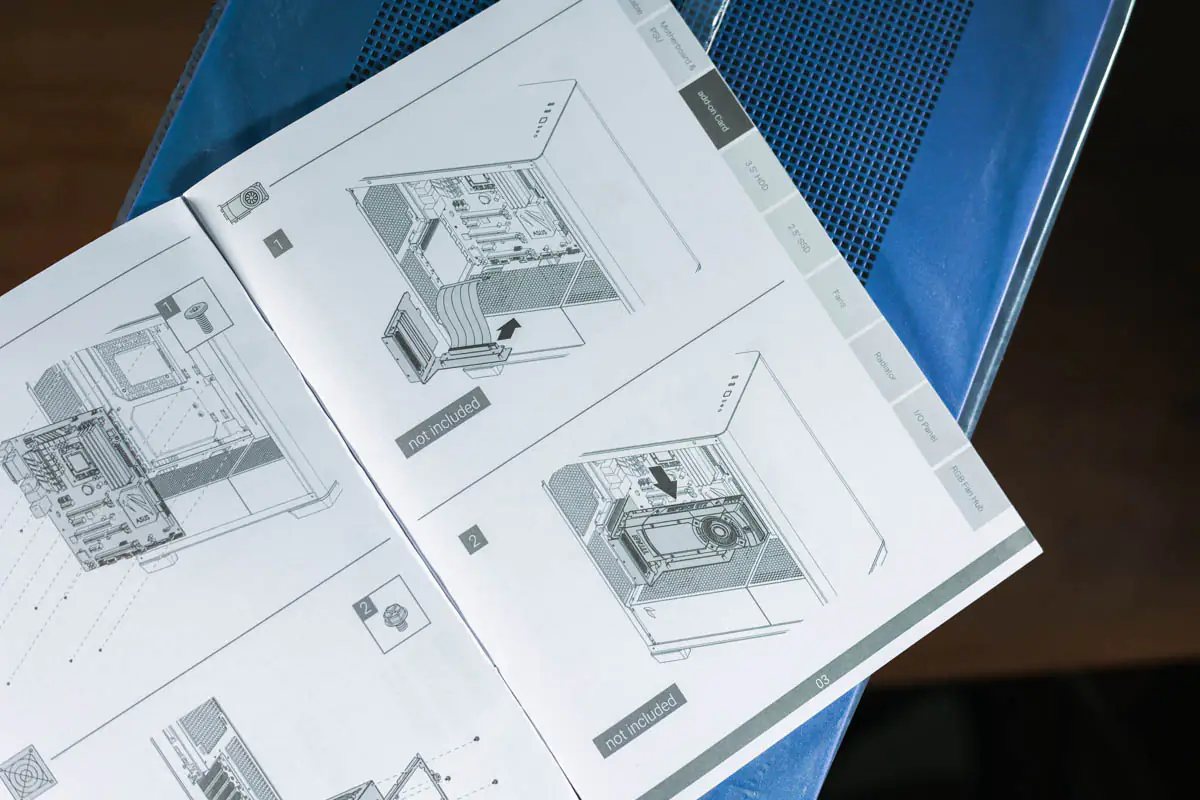
Nuances
I’ll now note the interesting points I’ve noticed. The front part of the case does not have cutouts at the bottom; instead, it has a solid panel, essentially without separate legs.
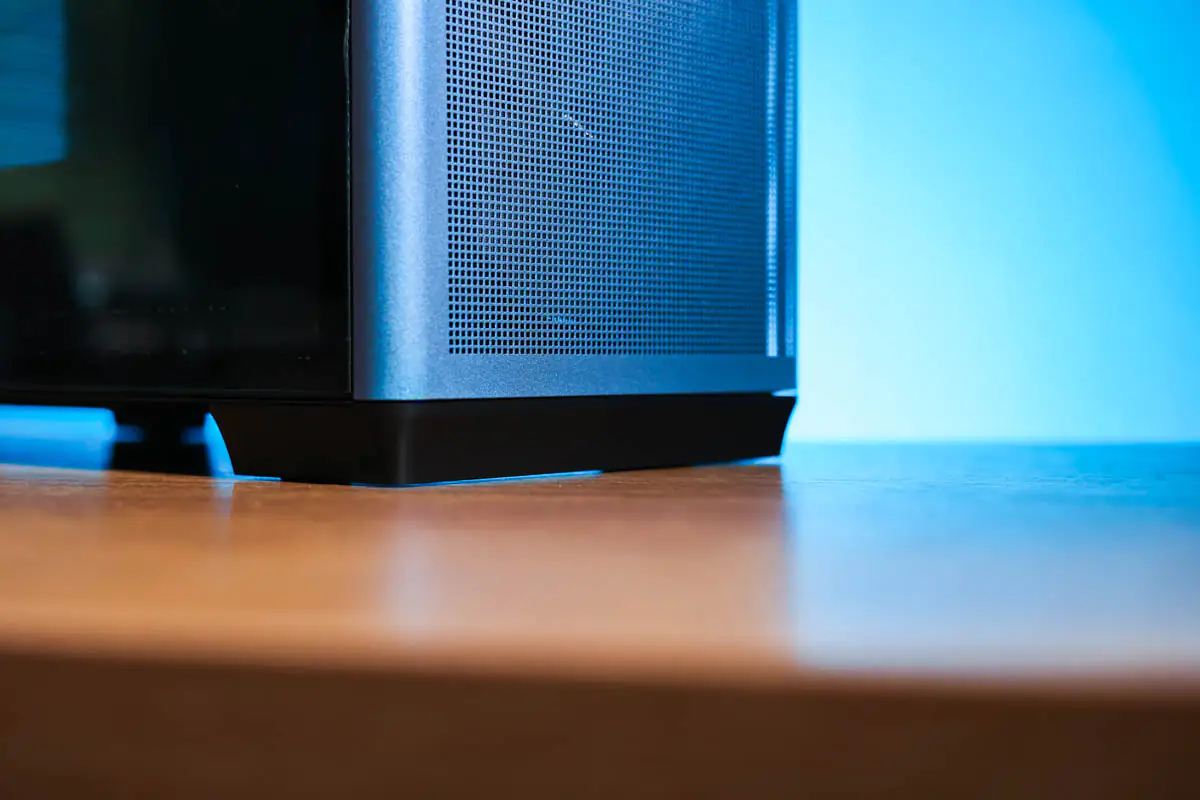
Which doesn’t prevent the case from having a separate dust filter on rails, but it’s best to access the APNX C1 from the sides, rather than from the front and back, as I usually do.
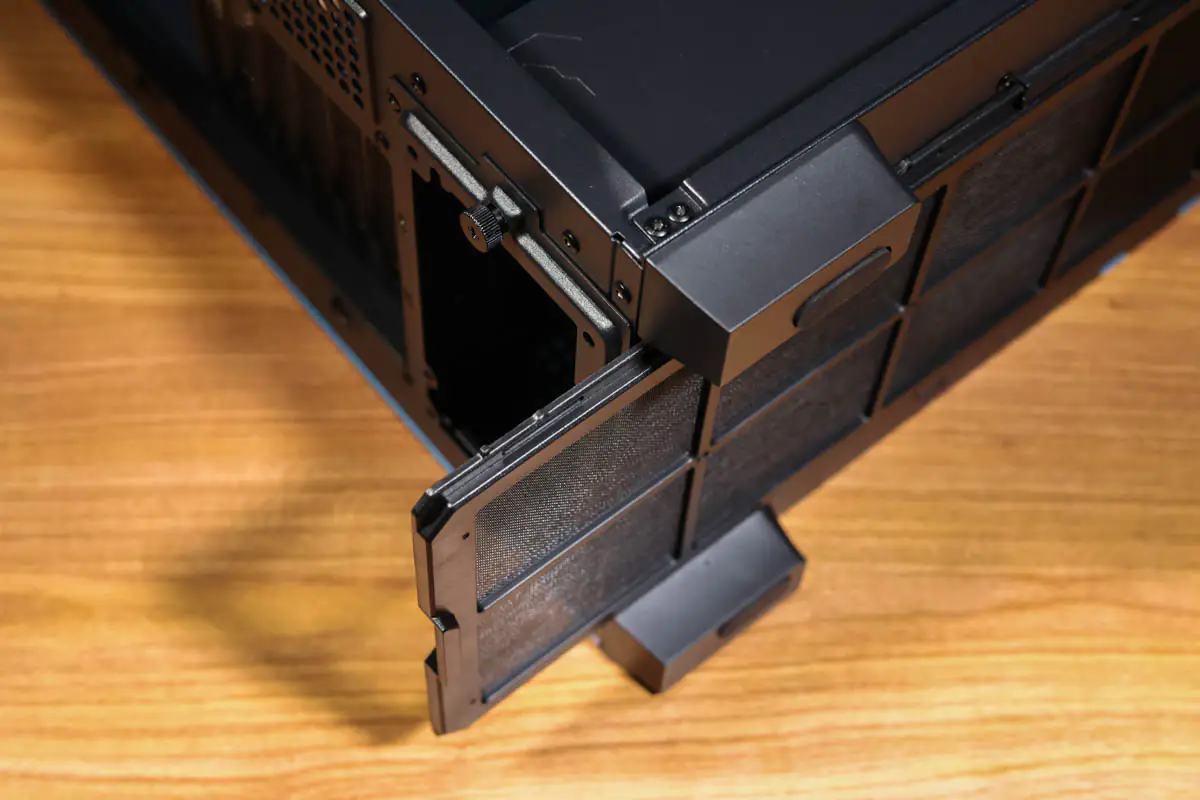
A separate sleeve is allocated for cable management, but there are no rubber grommets. According to the manufacturer, there’s even compatibility with next-gen motherboards like Project Stealth.
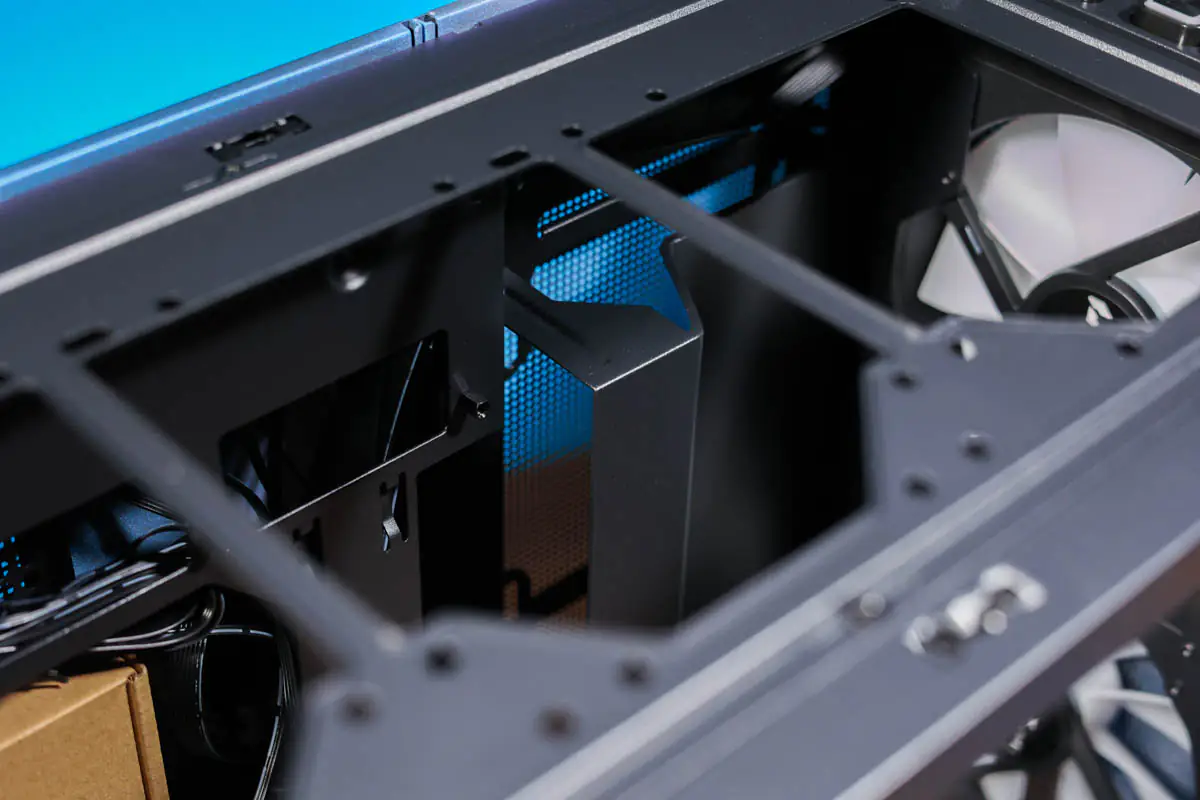
The fan hub is tucked away at the top of the case, which, on one hand, keeps it out of sight but, on the other hand, makes accessing it a bit more challenging than usual. It’s powered via SATA and synchronized via RGB 3-pin with the motherboard, supporting up to 5 fans at maximum. Remember, there are 4 included in the kit.
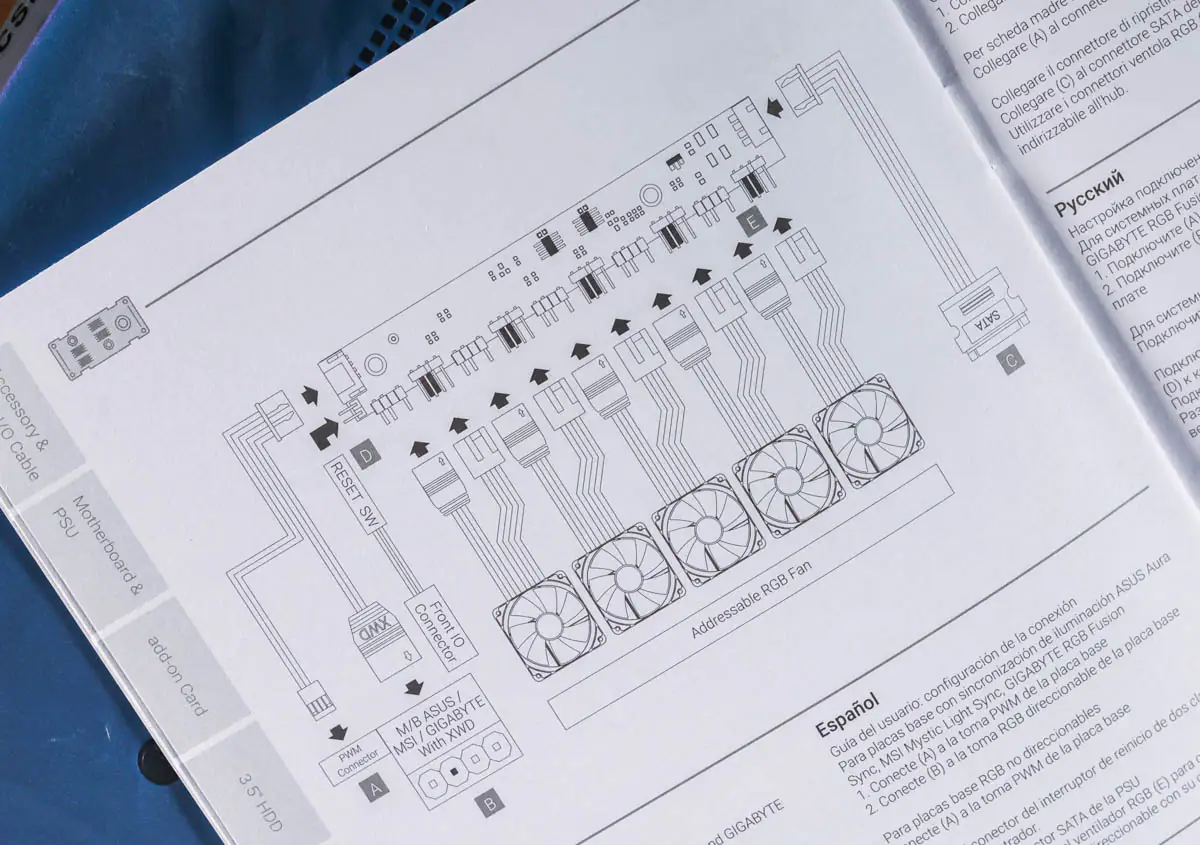
My recommendation – if you decide to add another fan, place it for exhaust at the bottom, under the area with the drives. This will help reduce turbulence from the graphics card. And the trio of 140mm fans, even without additional assistance, will provide the components inside the case with fresh oxygen. And not only that.
Summary
I won’t claim that this case impressed me with its compatibility or versatility, but it did impress me with its features and appearance. I’ll never tire of saying it – modern Mid-Tower cases look better with each passing day, and each of them is good in its own way. APNX C1 is unique, and that’s a huge credit to it. I recommend it!
Read also:
- Cougar MX600 RGB Full-Tower Computer Case Review
- ASUS TUF Gaming GT502 case review: A princely suite for hardware
- Be quiet! Shadow Base 800 DX Computer Case Review


